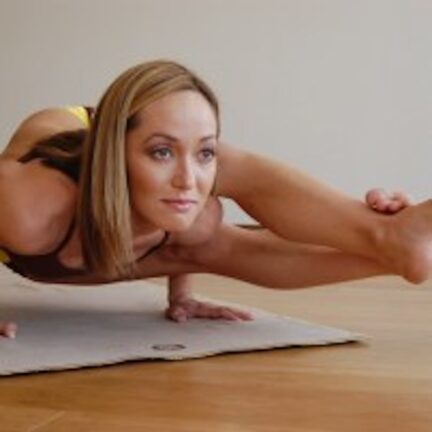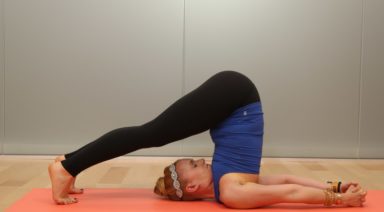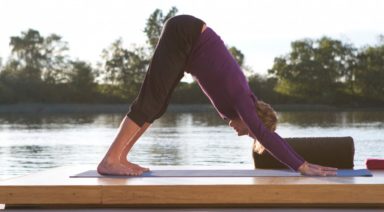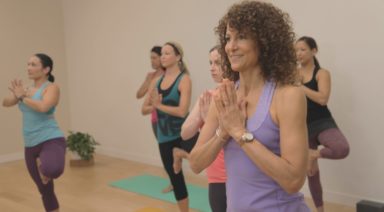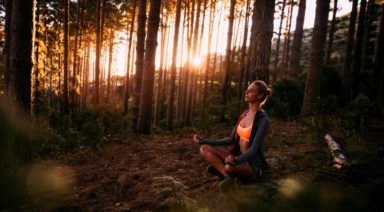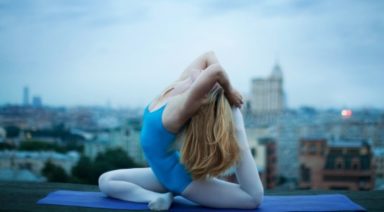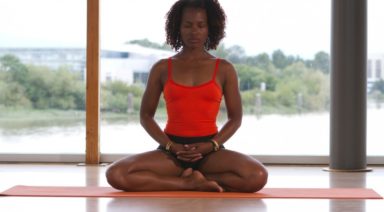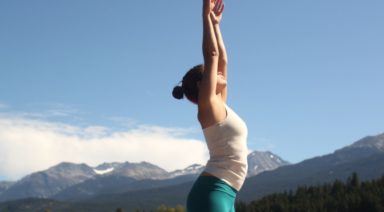A Beginner’s Guide to Yoga
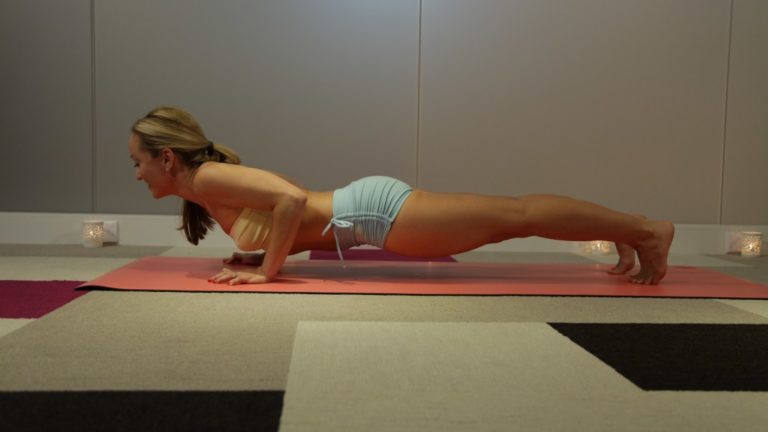
The true journey into yoga begins with a desire to live a more peaceful life. Even though the average beginner yoga student may be totally unaware of that yearning, the thing that keeps every student of yoga coming back to their mats is the inner connection between breath, body, mind and spirit.
Yoga is a door to a state of harmony that would otherwise get lost amidst the buzzing of emails, video chats, text messages and another level on Angry Birds. This evolution into a full-fledged spiritual discipline often starts with a much more humble beginning.
Why People Return to Yoga Again and Again
Some people start yoga to get the thin, flexible yoga body, others to follow an attractive significant other into a hot steamy room with little clothing, and still others in pursuit of health or healing from injury and disease. There are also a few people who initially turn to yoga as an answer to the chaos and confusion of life and understand it viscerally to be a spiritual path. While all students of yoga do not start for the same reasons they stay with the practice for the same essential reason.
The thing that keeps students of yoga committed to what is sometimes an arduous path is the success of yoga as a spiritual discipline that leads the way into happiness, bliss and contentment. One important factor in a student’s journey into this inner realm is the guidance they receive during their first year. Like a child’s heart, a beginner’s mind is open, innocent and willing to trust, love and learn. It is the teacher’s responsibility to teach with integrity, wisdom, humility and compassion. This tender stage of a yoga student’s journey will often determine whether the student will treat yoga as a true spiritual path or just another physical activity to be thrown out when a new fitness trend comes through.
Crucial Points for a Beginner Yogi
The Goal of Asana Practice
If you are a beginner within your first year of yoga practice there are some crucial points to understand. The goal of yoga practice is to bring your mind into a deeper state of connection so that you can perceive the truth more clearly. This inner practice is actually more relevant than the attainment of the physical postures. If you set your mind to go deep within the adventure of the dark regions of your own consciousness will draw you further along the path then you ever imagined possible.
Trust in your own power to light the way and ask for help whenever you feel lost.
Relax Into the Process
Many new students get very inspired by the far reaching potential of the complete spiritual path of yoga and end up setting very high expectations for their personal practice. But this enthusiasm can sometimes lead to a totally avoidable low in the practice. Rather than starting off with an all-or-nothing attitude that demands a full transformation into a yogic lifestyle within a matter of months, it is better to relax into the process over a longer period of time.
Other students have a hard time accepting that they are yoga practitioners. These students often avoid buying their own yoga mat, dedicated yoga clothes or membership to a yoga center. At some moment being a student of yoga is a conscious choice that must be embraced within the heart of the student if the practice is to be truly effective. Yoga is a lifestyle more than an activity that can be compartmentalized into one area of your life. Instead of attempting to take on all the accouterments of the practice as a beginner, it is best advised to ease more slowly into the lifestyle changes as your inner awareness changes to suit these new behaviors.
How Often to Unroll Your Mat
If you are totally new to working your body you will certainly be sore for the majority of your first year of practice. Learn to enjoy it. A good goal to set when starting off with the physical practice of yoga is to unroll your yoga mat at least three (but up to six) times a week for at least the Sun Salutation A. This will give you a small, attainable goal that you can integrate into your life quite easily.
In fact, if you practice the traditional Mysore Style Ashtanga Yoga method as a total beginner, your first practice will consist of the Sun Salutations for the first weeks and be perhaps only twenty minutes long each session. This small segment of practice can fit rather effortlessly even into the busiest schedule. With the interest in yoga growing, one thing that often hampers an inspired student’s ability to progress is the proximity to a qualified teacher. More students are practicing at home with online yoga classes, YouTube tutorials, books, DVDs and other resources. While this is certainly better than not practicing at all, self-study ideally paves the way for a meeting with a true teacher who will provide the concrete direction needed to move confidently along the inner path of yoga.
Find a Good Yoga Teacher
Once you have been practicing yoga for a few years it is easy to forget what it was like to be a total beginner. A seasoned practitioner can reignite the flames of inspiration by remembering their first yoga class and relishing the beauty and wonder of those first months of practice. There is so much that is taken for granted in the mind of even a modestly regular yoga student that can be consciously cultivated on a daily basis. I still remember the magic of my meeting with Sri K. Pattabhi Jois in the small south Indian city of Mysore. It changed my life forever and it inspires me every day that I practice the Ashtanga Yoga method. One year of practice, even a decade of practice just scratches the surface. A whole lifetime of sincere practice of not just the physical postures, but also the inner spiritual work, reveals the depth and scope of the power of yoga.
Broga: 6 Things Every Man New To Yoga Must Know

If you’re a man thinking of taking up yoga, or you’ve just started, then you must read this. It will save you time, confusion and even a bit of embarrassment.
Eyes Wide Shut Guys, when in down dog, learn to close your eyes and get into the pose. Why? One, to feel your way into a deeper stretch. Two, and perhaps more importantly, if you’re in front of a woman and she’s moving through her vinyasa, you could be making it awkward. You may want to be staring at your belly button, but trust me, those eyes may wander and make someone feel uncomfortable.
Kiss My Asana. When you’re in prasarita (a wide-legged forward bend) and you’re in a full class, please be considerate. Stagger your position with your neighbors, and as recommended in the point above, close your eyes. You also want to make sure you’re giving your female neighbors plenty of space coming in and out of the pose, just in case it looks like you’re trying to be a little too… neighborly.

